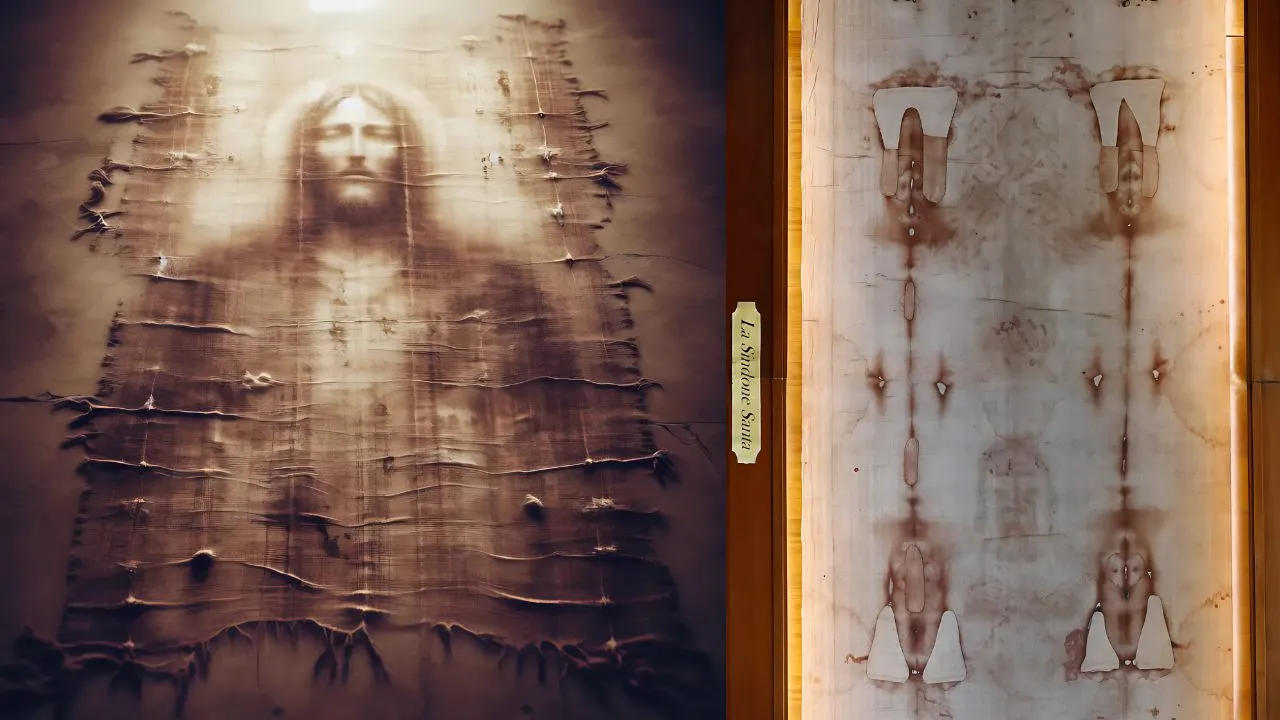In a groundbreaking development, new X-ray analysis of the Shroud of Turin, combined with artificial intelligence (AI) technology, has reignited the debate over whether this ancient cloth is the true burial shroud of Jesus Christ.
The Shroud has long been a subject of fascination and controversy, with believers seeing it as a sacred relic imprinted with the face of Christ, while skeptics have questioned its authenticity. However, recent scientific advancements are now challenging previous conclusions and providing a fresh perspective on this enigmatic artifact.
Table of Contents
Revisiting the Shroud’s Origins: A 2,000-Year-Old Relic?
The Shroud of Turin has been a revered relic among Christians, believed to bear the image of Jesus Christ himself. Previous dating analysis in the 1980s suggested that the Shroud was a medieval forgery, dating back to the 1300s.
However, a recent study published in the Heritage journal, led by Dr. Liberato de Caro, has utilized cutting-edge wide-angle X-ray technology to date the Shroud to around 2,000 years ago, placing it within the timeframe of Christ’s life.
This new analysis suggests that the previous carbon dating tests may have been flawed due to contamination and environmental factors. The study’s results indicate that the Shroud’s fabric closely matches samples from Masada, Israel, dated between 55 and 74 CE. This finding adds weight to the theory that the Shroud could indeed be from the time of Jesus.
The Role of AI: Bringing Christ’s Face to Life
In an extraordinary use of technology, AI has been employed to create vivid and lifelike renderings of the face imprinted on the Shroud. These images depict a man with shoulder-length hair, a beard, and features that closely resemble traditional depictions of Jesus in classical art.
The AI-generated images have sparked renewed interest and debate, as they provide a striking visual representation that many believe could be the face of Christ.
Several versions of the AI rendering have been produced, each offering a slightly different perspective. One image, created by the AI site Midjourney, shows a bare-chested man with visible wounds, suggesting he had been tortured and killed—an interpretation consistent with the crucifixion of Jesus.
Another version, generated by the Daily Mail, portrays a clothed figure with deep-set blue eyes and a head covering, further fueling the speculation about the Shroud’s authenticity.
Table 1: Key Findings from Recent Studies on the Shroud of Turin
| Study/Technology | Findings | Implications |
|---|---|---|
| 1980s Carbon Dating | Shroud dated to the 1300s | Suggested it was a medieval forgery |
| 2024 X-Ray Analysis | Shroud dated to ~2,000 years ago | Supports the theory that it’s from Christ’s time |
| AI Image Rendering | Depicts a man with features resembling Jesus | Provides a visual link to classical depictions of Christ |
Pollen Evidence: Tracing the Shroud’s Geographic Origins
Adding to the intrigue, Dr. de Caro’s team also discovered tiny particles of pollen embedded in the Shroud’s linen fibers. These particles are native to the Middle East, further challenging the idea that the Shroud originated in Europe.
This finding aligns with the theory that the Shroud could have been used in the burial of someone from the region, potentially Jesus Christ.
The Catholic Church’s Stance: A Relic of Faith
Despite the ongoing debate, the Catholic Church has maintained a neutral stance on the Shroud’s authenticity. While it has not officially declared the Shroud as the burial cloth of Christ, several popes have venerated it as a miraculous relic.
In 2015, Pope Francis made a pilgrimage to Turin to pray before the Shroud, underscoring its significance within the Church.
Conclusion: A New Chapter in the Shroud’s History
The latest scientific advancements have breathed new life into the mystery of the Shroud of Turin. While definitive proof of its authenticity may remain elusive, the combination of modern technology and historical analysis is bringing us closer to understanding this ancient artifact. Whether viewed as a relic of deep religious significance or a fascinating historical puzzle, the Shroud of Turin continues to captivate the imagination of believers and skeptics alike.
Table 2: Timeline of Significant Events Related to the Shroud of Turin
| Year | Event | Significance |
|---|---|---|
| 1354 | Shroud enters historical record | Begins its journey as a religious relic |
| 1980s | Carbon dating suggests medieval origin | Fuels skepticism about its authenticity |
| 2024 | New X-ray analysis dates Shroud to ~2,000 years ago | Revives the theory of its connection to Christ |
This comprehensive exploration of the Shroud of Turin not only delves into its historical and scientific background but also employs modern technology to offer a fresh perspective on one of the most debated artifacts in religious history.

